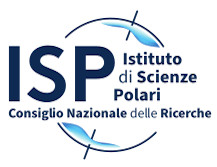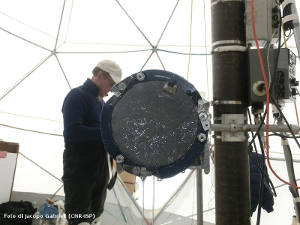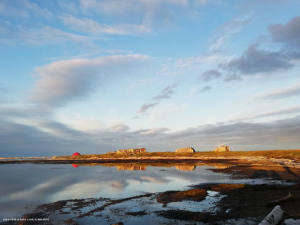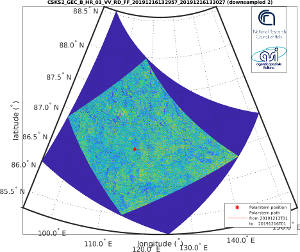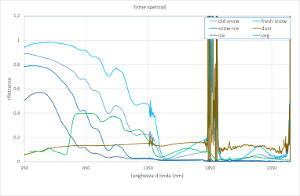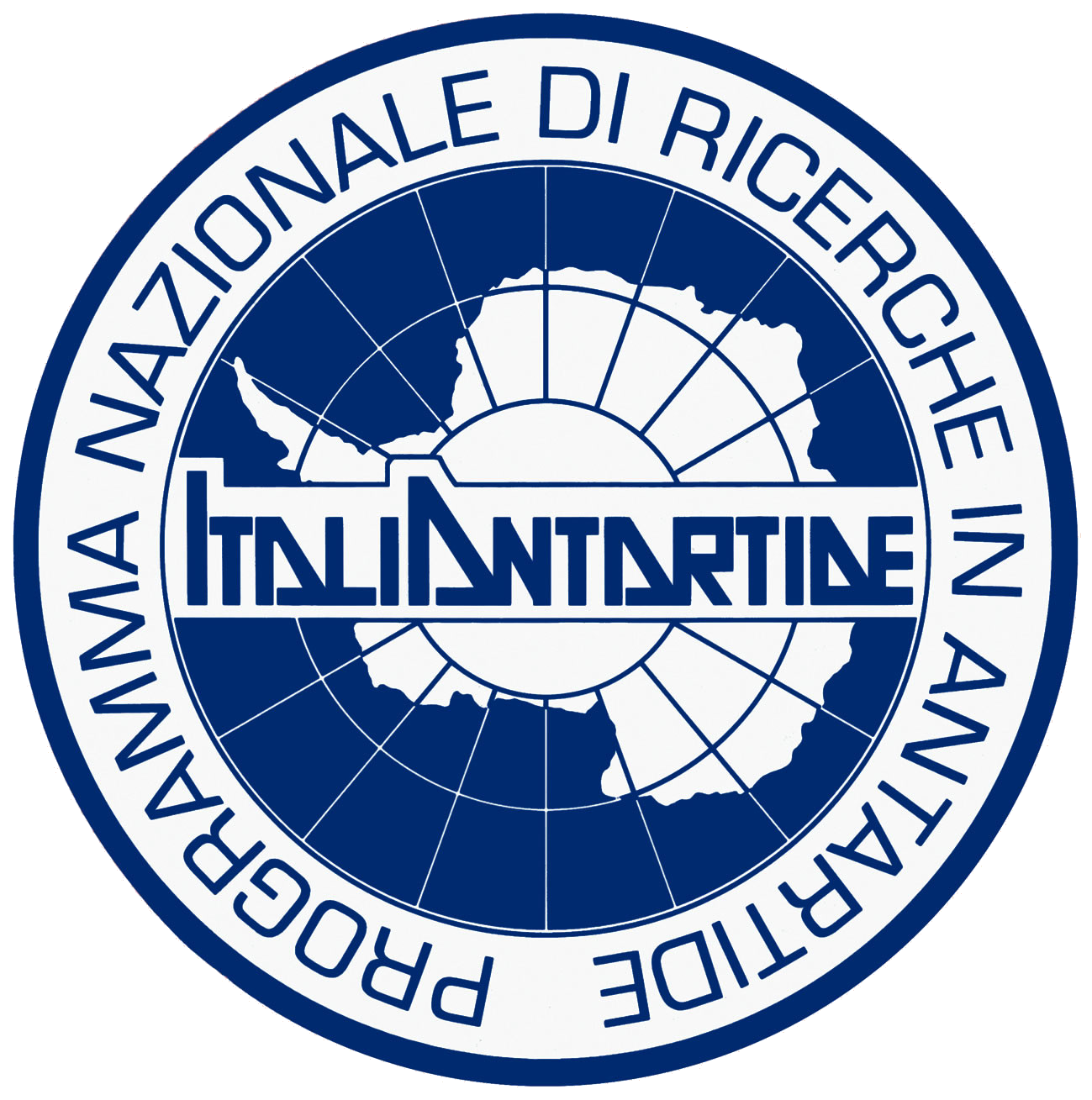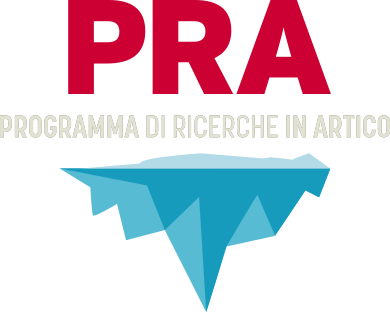English_content
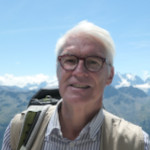 Degree in Physics, University of Padua; Post Graduate School in Maritime and Coastal Engineering, University of Padua. In 1996-1997 Human Capital Mobility EC grant at Proudman Oceanographic Laboratory (Birkenhead-Liverpool, UK) where he made research on numerical and physical sensitivity in coastal and shallow water environments.
Degree in Physics, University of Padua; Post Graduate School in Maritime and Coastal Engineering, University of Padua. In 1996-1997 Human Capital Mobility EC grant at Proudman Oceanographic Laboratory (Birkenhead-Liverpool, UK) where he made research on numerical and physical sensitivity in coastal and shallow water environments.
Researcher at CNR from 1998, presently Director of Research at the Institute of Polar Sciences of the Italian National Research Council (CNR-ISP). He has done research work on wind wave modelling and on coastal processes with special focus on sediment transport; the models used are numerical wave and sediment transport models coupled with 3D circulation models. His research interests currently are the physical processes at the air-water and water-sediment interfaces, the wave-current coupling and the wave climate variations due to climate changes and their impact on coastal vulnerability. Other interests include the application of indicators for the integrated management of the coastal zone and the measurements of wave spectra with stereoscopic techniques.
Co-author of more than 70 scientific papers in ISI journals and of more than 150 conference papers; co-author of 2 patents and editor of MEDATLAS: Wind and Wave Atlas of the Mediterranean Sea. He participated in and coordinated several national and international research projects. In 2017 and 2018 he has been Head of the Institute of Marine Sciences of the Italian National Research Council (CNR-ISMAR).
Scopus - Author ID: 7004338399 Google Scholar Research Gate
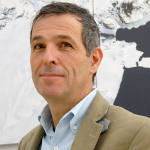 Director from the 1st May 2020 until the 30th April 2024.
Director from the 1st May 2020 until the 30th April 2024.
Full Professor at the Ca’ Foscari University of Venice, he has been dealing with analytical methods development and paleoclimatic reconstructions since many years. He has participated in several expeditions in polar regions and in the Alps and is author of more than 250 publications in high impact scientific journals (h-index 45).
Professor of Earth's Climate at Ca' Foscari Harvard Summer School, he has been recently granted by the European Research Council with a prestigious Advanced Grant. He has been professor at the Accademia Nazionale dei Lincei (2012-2014) and is an elected member of the Accademia delle Scienze detta dei XL and of the Istituto Veneto di Scienze Lettere ed Arti. He is currently past-President of the Italian Society for Climate Sciences and National Representative in the H2020 Programme Committee on Climate Action, Environment, Raw Material and Resource Efficiency.
The increasingly evident melting of the ice sheets and glaciers with the consequent changes in sea level, together with the destruction of the ice shelves, highlight how this part of the cryosphere is an extremely fragile portion of the Earth system. Glaciers are unique climate archives that give us the opportunity to investigate the climate of the past and to assess the changes taking place with a long-term perspective. However, these changes are also evident from the melting of the permafrost, which has a dramatic impact in polar and high-altitude mid-latitudes areas. In the difficult context of climate change, the researchers of the Institute of Polar Sciences, through their interrelated research activities, deal with the study of snow and ice, their chemical composition and their main physical parameters, the evolution of the permafrost and the impact of increased melting on the atmosphere, biosphere and hydrosphere at both regional and global levels.
Snow cover
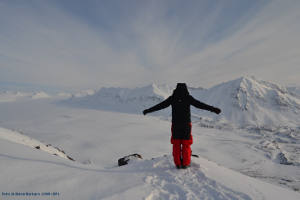 As well as affecting the mass balance of glaciers and polar ice caps, snow preserves the chemical composition of the atmosphere and interacts dynamically with all other environmental components of the polar regions. It represents an extremely reactive portion of the cryosphere where multiple post-depositional processes can occur. The study of snow cover in these regions is therefore essential to understanding the processes, interactions and changes that are occurring as a result of climate change and help us to assess the impacts on the global system. It is also critical for understanding the mechanisms of re-emission and release of compounds accumulated during the polar night and the significant impact that these releases may have on polar bio-geochemical cycles.
As well as affecting the mass balance of glaciers and polar ice caps, snow preserves the chemical composition of the atmosphere and interacts dynamically with all other environmental components of the polar regions. It represents an extremely reactive portion of the cryosphere where multiple post-depositional processes can occur. The study of snow cover in these regions is therefore essential to understanding the processes, interactions and changes that are occurring as a result of climate change and help us to assess the impacts on the global system. It is also critical for understanding the mechanisms of re-emission and release of compounds accumulated during the polar night and the significant impact that these releases may have on polar bio-geochemical cycles.
Photo by Elena Barbaro (CNR-ISP)
High-altitude weather and climate observatory of Col Margherita (MRG)
Regional Station GAW-WMO
The Col Margherita High Altitude Observatory (MRG) is located on the southern slope of the Eastern Alps (46.37 N, 11.79 E), at an altitude of 2543 meters above sea level. The site is located within the Dolomites, a UNESCO World Heritage Site, and is considered strategic, because despite not being at a particularly high altitude, it is representative of the synoptic conditions of the south-facing Eastern Alps, where there is no similar station. The main characteristics of the site are that it represents the synoptic conditions of the free troposphere at that height and pressure (700 hpa), as there are few the orographic barriers in the surrounding area and there is an absence of local pollution sources.
Instrumentation currently installed at the observatory:
- full meteorological station: temperature, humidity, wind speed and direction, atmospheric pressure, incident and reflected solar radiation, sensors for the measurement of atmospheric precipitation and snow cover height;
- mercury analyser;
- temperature controlled bulk deposition sampler for the collection of precipitation for mercury analysis;
- bulk deposition samplers to collect samples for the analysis of organic, inorganic and stable isotopes in precipitation.
Follow us on Twitter
History
The Col Margherita Observatory was built in 2012 in the framework of GMOS Project (2013-2015) and it was subsequently operational within the Nextdata (2016-2018) and I-GOSP (2018-2020) projects. The observatory is equipped with a complete meteorological station, an ozone analyser and a total gaseous mercury analyser. The station is fully automated. It is connected to the main power grid and is also equipped with a solar power backup system with ~200ah of batteries in case of network failure. The observatory is equipped with a remote control via GSM/GPRS technology. The site, due to its proximity to the cable car of the San Pellegrino Ski is accessible, and can be used for seasonal sampling campaigns for snow, and wet and dry atmospheric deposition.
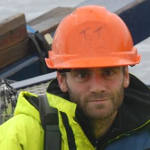 MS (2003) and PhD (2006) in Environmental Marine Sciences (University of Bologna).
MS (2003) and PhD (2006) in Environmental Marine Sciences (University of Bologna).
Dr. Tesi research focuses on climate change in present and ancient systems affecting sea ice and permafrost. He was awarded with two Marie Curie fellowships to work at the Oregon State University (USA) and University of Stockholm (Sweden). He is in the Editorial Board of the Marine Chemistry journal (Elsevier) with focus on marine organic biomarkers and Guest Editor of the Ocean Science journal (Copernicus). He is the Italian representative and member of IASC (International Arctic Science Committee) Marine Working Group. He has published 50 scientific papers in peer-reviewed journals dealing with the use of fossil biomarkers to investigate modern and paleo climate change. He served as chairman at the European Geosciences Union (EGU) meeting in Vienna (Austria) and at the American Geophysical Union (AGU) Fall meeting in San Francisco (USA). He has participated to 17 oceanographic expeditions in the Mediterranean Sea and Arctic combined accounting for over 200 days of at sea activities.
![]() http://orcid.org/0000-0002-1686-3375
http://orcid.org/0000-0002-1686-3375
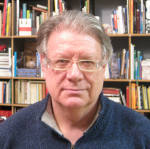 Director of Research at the CNR Institute of Polar Sciences (ISP) in Bologna, involved in polar research and management since 1986, both in Antarctica and in the Arctic. I am an expert of radiative transfer processes into the atmosphere, with research focus on radiation budget and role that atmospheric composition and surface characteristics play in modulating Shortwave (SW) and Longwave (LW) radiation components, determining their seasonal and inter-annual variability. In the last 10-15 years, I also promote implementation of complex and multidisciplinary observing platforms, as the Amundsen-Nobile Climate Change Tower at Ny Alesund, to investigate coupling processes at the air-snow-land interface and in the Atmospheric Boundary Layer (ABL).
Director of Research at the CNR Institute of Polar Sciences (ISP) in Bologna, involved in polar research and management since 1986, both in Antarctica and in the Arctic. I am an expert of radiative transfer processes into the atmosphere, with research focus on radiation budget and role that atmospheric composition and surface characteristics play in modulating Shortwave (SW) and Longwave (LW) radiation components, determining their seasonal and inter-annual variability. In the last 10-15 years, I also promote implementation of complex and multidisciplinary observing platforms, as the Amundsen-Nobile Climate Change Tower at Ny Alesund, to investigate coupling processes at the air-snow-land interface and in the Atmospheric Boundary Layer (ABL).
Research activities in this period included also (i) studies on effects of ozone depletion events in the Arctic on UV surface fluxes and their propagation at lower latitudes, (ii) investigation of snow surface albedo (broadband, spectral) and melting process, (iii) observations of aerosol vertical profiles (stratification) in polar (ABL) with tethered balloon (iv) improvement of polar night aerosol measurements thanks to the new lunar photometric technique. Always interested to improve observation capabilities in/for harsh environments, developing also custom instrumentation. At the moment, efforts are devoted to develop new systems for snow optical characteristics (spectral albedo, BRDF reflectance), as well as to improve atmospheric measurements over the ocean in general, and in particular quality, continuity and accuracy of ship measurements of radiation, cloudiness characteristics, and columnar aerosol (AOT).
![]() https://orcid.org/0000-0003-0978-8976 Scholar
https://orcid.org/0000-0003-0978-8976 Scholar
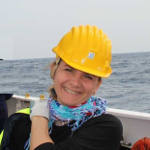 Degree in Geological Sciences - University of Bologna, 1999. Researcher at the CNR ISMAR in Bologna, 2000- 2019. Researcher at the CNR-ISP in Bologna, 2019-present.
Degree in Geological Sciences - University of Bologna, 1999. Researcher at the CNR ISMAR in Bologna, 2000- 2019. Researcher at the CNR-ISP in Bologna, 2019-present.
She deals with sedimentological, mineralogical and biogeochemical reconstructions, transport pathways and depositional processes of the bottom sediments and suspended particles; assessments of impact by inputs of nutrients and contaminants from urban, industrial, harbours, aquaculture and offshore activities in lakes, transitional environments, and coastal to deep marine ecosystems. She specialized in the phosphorus cycle to identify the causes of the onset of dystrophic crises, anoxic crises and mucilaginous phenomena. She studies the biogeochemical cycles of carbon, nutrients and metals, their speciation, early diagenesis processes, bioavailability and benthic flows at the water-sediment interface.
She has been participated to the deployment and management of permanent automatic buoy stations and moorings and the development, calibration and validation of sediment incubators, benthic chambers and landers for the measurement, sampling and analysis of marine environmental parameters for marine researches and monitoring.
She is involved in the study of carbon, nutrients, contaminants and organic matter in particulates and in their calculations of mass balance, vertical flows and lateral transport from the continental shelf to deep basins.
Participation in EC, PRA and PNRA Projects, Conventions with Italian Regional Authorities and Contracts with large and small-medium Enterprises. PI or WP leader of national and international projects. More than 50 oceanographic cruises (25 as Chief Scientist). Supervisor and tutor in over 30 degree thesis and traineeships. Author and co-author of ca. 100 scientific reports, 20 publications, 50 abstracts, 149 citations, H index = 8 (Scopus).
![]() http://orcid.org/0000-0001-5662-2659 Scopus
http://orcid.org/0000-0001-5662-2659 Scopus
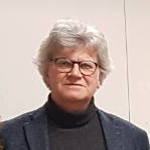 Master degree in Physics at the Padova University. Researcher at CNR since 1988. The main research activity is on the field of Earth Observarion, carried out using active instruments (Synthetic Aperture Radar-SAR, scatterometer), to monitor the sea surface, with the main focus on the meteorological processes at meso and micro scales (below 5 km) and on the extraction geophysical parameters from the SAR images. He is involved in alpine glaciers modelling, to study their evolution under the different scenarios of the climate change.
Master degree in Physics at the Padova University. Researcher at CNR since 1988. The main research activity is on the field of Earth Observarion, carried out using active instruments (Synthetic Aperture Radar-SAR, scatterometer), to monitor the sea surface, with the main focus on the meteorological processes at meso and micro scales (below 5 km) and on the extraction geophysical parameters from the SAR images. He is involved in alpine glaciers modelling, to study their evolution under the different scenarios of the climate change.
He coordinated projects with ESA (European Space Agency) and is co-investigator in projects of ASI (Agenzia Spaziale Italiana). At present he is Principal Investigator of IsCSK4MOSAiC, an ASI and CNR project, to provide to the artic expedition MOSAiC (mosaic-expedition.org, September 2019-September 2020) SAR images of CosmoSkyMED in near real time.
He is associated professor of Remote Sensing at the Persian Gulf University, Bushehr, Iran.
Current position: retired
Scopus - Author ID: 6701758544 ![]() http://orcid.org/0000-0003-4633-1238 WoS Researcher ID: O-2523-2015
http://orcid.org/0000-0003-4633-1238 WoS Researcher ID: O-2523-2015
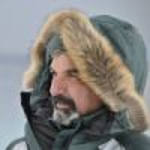 In memory (1955 - 2023)
In memory (1955 - 2023)
He graduated degree in Physics at the University of Rome La Sapienza a thesis in physical oceanography. Hired in 1984, in the CNR he carried out research in the field of satellite remote sensing of the sea surface. In 1992 he began to deal with processes in the atmospheric boundary layer using acoustic remote sensing from the ground. He collaborated in the development and implementation of sodar (SOund Detection and Ranging) in the development of new methodologies for observing the lower atmosphere. As part of these activities, he participated in several campaigns in Antarctica at the Mario Zucchelli and Concordia stations, for the study of the dynamic characteristics of the atmospheric boundary layer in a polar environment.
Since 2009 he has oriented his research activity on the processes relating to climate change in the Arctic polar region, which has seen a strong revival of research in the atmosphere, with the construction of the Climate Change Tower, an important infrastructure to measure physical parameters of the lower atmosphere, for which he is responsible. He currently has a coordination role in the working group of the Italian research activities at Svalbard, he represents the CNR in the NYSMAC and is included in the SIOS coordination working groups for the data management in Svalbard (SDMS) and he is Chair of the WG for Research Infrastructures Coordination Committee (RICC). He is also one of the Italian representative within the Arctic Council's AMAP (atmospheric monitoring) working group. Finally, he is the scientific manager of the IADC (Italian Arctic Data Center) the digital infrastructure for the management of data collected at the Arctic station Dirigibile Italia.
Scopus - Author ID: 7005414768 ![]() http://orcid.org/0000-0002-6545-7496 Google Scholar
http://orcid.org/0000-0002-6545-7496 Google Scholar
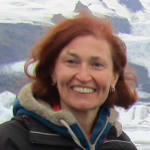 Geologist, from 2003 technologist at the National Research Council of Italy (CNR). Her research interests are in knowledge organisation, science language, terminology tools (Thesauri, Glossaries, and Ontologies) and environmental assessment (impact studies reports and emission inventories). Experience in planning, designing and implementing webGIS and GIS, focusing especially on thematic cartography.
Geologist, from 2003 technologist at the National Research Council of Italy (CNR). Her research interests are in knowledge organisation, science language, terminology tools (Thesauri, Glossaries, and Ontologies) and environmental assessment (impact studies reports and emission inventories). Experience in planning, designing and implementing webGIS and GIS, focusing especially on thematic cartography.
Research Gate
More...
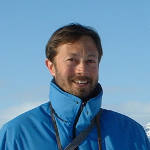 Graduated in Natural Sciences in 1984.
Graduated in Natural Sciences in 1984.
CNR researcher since 1994 at the Institute of Biomedical Technologies (CNR-ITBM). Since 2002 at the Institute on Atmospheric Pollution (CNR-IIA). From 2019 to the Institute of Polar Sciences (CNR-ISP).
CNR macro areas of reference: Earth and Environment.
Research interests:
- environmental and geographical knowledge organization
- qualitative and quantitative analysis of vertebrate fauna
- Geographic Information Systems
- military geosciences
He currently carries out research on conceptual development and technological innovation in the field of knowledge organization, controlled terminology and multilingual thesauri for the environment. He collaborated, among others, with the United Nations Environment Program (UNEP), with the European Environment Agency (EEA), with the American Environmental Protection Agency (US EPA). He is co-author of the UNEP-Infoterra Thesauri, GEMET, GEneral Multilingual Environment Thesaurus and EARTh, Environmental Applications Reference Thesaurus.
Scopus - Author ID: 25121723300 ![]() http://orcid.org/0000-0001-7315-3364
http://orcid.org/0000-0001-7315-3364
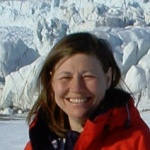 Graduated in Geological Sciences (1981), obtained her PhD in Earth Sciences (1987) at the University of Rome La Sapienza. She started her scientific activity at CNR during her PhD and in 2001 become senior researcher at CNR-IIA. In 2019, she joined the CNR-Institute of Polar Science. She is Adjunct Professor in Remote Sensing and GIS at the Dept. of Ecobiology (University of Roma Sapienza) since 2011.
Graduated in Geological Sciences (1981), obtained her PhD in Earth Sciences (1987) at the University of Rome La Sapienza. She started her scientific activity at CNR during her PhD and in 2001 become senior researcher at CNR-IIA. In 2019, she joined the CNR-Institute of Polar Science. She is Adjunct Professor in Remote Sensing and GIS at the Dept. of Ecobiology (University of Roma Sapienza) since 2011.
Scientific interests: environmental studies, at local and global scale, in Polar and Mediterranean areas using multi-sensor and multi-platform remote sensing images; geostatistical analysis of environmental data and thematic cartography in GIS environment.
Her research activity is focused on the study of the spectroradiometric properties of natural surfaces (from Visible to Thermal Infrared range) aimed to the interpretation and analysis of products deriving from Earth Observation.
Since 1997, she was involved in field surveys in Polar Regions (Antarctica and Arctic) to study the radiometric properties of snow and ice, and the interactions at snow/air/soil interface.
People CNR
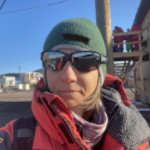 Graduated in Biological Sciences (2006) at Sapienza University, Rome and PhD in Ecology and Natural Resources Management (2013),Tuscia, University, Viterbo. She recently joined as researcher the CNR, Institute of Polar Sciences (2020) in Rome (Montelibretti) and she is lecturer in Remote Sensing and GIS for the Master Degree Course in Ecobiology at Sapienza, University, Rome.
Graduated in Biological Sciences (2006) at Sapienza University, Rome and PhD in Ecology and Natural Resources Management (2013),Tuscia, University, Viterbo. She recently joined as researcher the CNR, Institute of Polar Sciences (2020) in Rome (Montelibretti) and she is lecturer in Remote Sensing and GIS for the Master Degree Course in Ecobiology at Sapienza, University, Rome.
Her scientific activities started with studies on the anthropogenic impacts in marine and coastal environments and in 2011 she joined the team of technical research collaborators at the Italian Institute for Environmental Protection and Research as an expert in ecology and geospatial application to environmental monitoring with a permanent position.
Her research spans from terrestrial to aquatic sphere and includes the use of remote sensing principles and methods in the field of ecology, geography and environmental sciences. She develops integrated models for ecosystem services assessment, natural capital estimation and natural resources monitoring, considering bio-geosphere cross scales interaction and addressing landscape spatial patterns and temporal process. She has experience in national and international research and capacity building projects, publications and dissemination in scientific contexts. She actively participates in the GEOBON Ecosystem Structure working group and in the technical roundtables supporting the European Copernicus and National Space Economy programs.
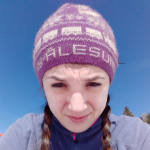 Current position: Researcher at Institute of Polar Sciences-CNR, Venezia; permanent position.
Current position: Researcher at Institute of Polar Sciences-CNR, Venezia; permanent position.
Previously: post-doc researcher at the Department of Environmental Sciences, Informatics and Statistics of Ca’ Foscari University of Venice after she obtained a PhD in Science and Management of Climate Change from the same university (2016). Study grant holder at the Department of Environmental Sciences, Informatics and Statistics of Ca’ Foscari University of Venice since 2011, after the master’s degree in Environmental Sciences.
Among her main research interests are atmospheric sampling and monitoring, gas chromatographic-mass spectrometric analyses and development of analytical methods for the determination of persistent organic pollutants in the atmosphere and of biomarkers in lake sediments. Her present activity is mainly focused on the characterization of organic proxies in sediments, soils and stalagmites, aimed in particular at reconstructing paleofires, human presence and the composition of vegetation during the Holocene.
She collaborated and collaborates to several national and international (EU-FP7, EU-H2020, NSF-DEB) research projects and coordinates the “BioCyCLeS” project, funded under the National Antarctic Research Program (PNRA 2018). She co-authored 14 papers on international journals with more than 240 citations (h-index 7). She co-supervised 12 degree theses and took part in the scientific secretariat and logistical organization of the Annual Conference of the Italian Society for Climate Sciences (SISC) in 2017 and 2018.
 Ministero dell'Universita e Ricerca
Ministero dell'Universita e Ricerca
Programma Ricerche Artico
Programma Nazionale di Ricerca in Antartide
 Ministero degli Affari Esteri e della Cooperazione Internazionale
Ministero degli Affari Esteri e della Cooperazione Internazionale
L'Italia e l’Artico
L’Italia e l’Antartide
CNR-ISP
National Research Council
Institute of Polar Sciences
c/o Scientific Campus - Ca' Foscari University Venice - Via Torino, 155 - 30172 VENEZIA MESTRE (VE)
Phone: +39 041 2348547 - E-mail: protocollo.isp AT pec.cnr.it
Fax: +39 041 2348 549 - Codice Fiscale: 80054330586 - P.I.:02118311006
Unless otherwise indicated, the content of this site is licensed : Attribution Non Commercial Share Alike 4.0 International (CC BY-NC-SA 4.0)
Privacy policy e Cookie policy - Transparent administration (CNR)
